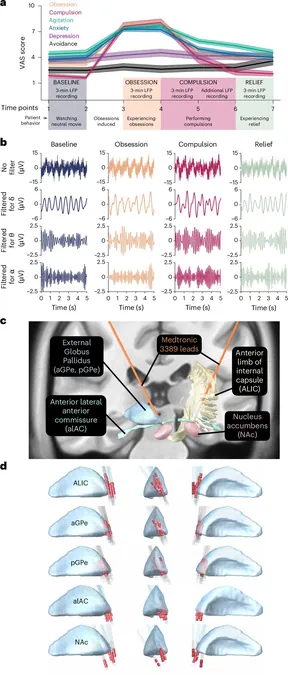
Revolutionary Switchable Metasurfaces: Unlocking Unprecedented Light Control
2025-07-08
Author: Rajesh
A Breakthrough in Light Manipulation
Imagine controlling light with the precision of a maestro conducting an orchestra! A groundbreaking team of researchers from Linköping University in Sweden has unveiled how smart optical metasurfaces can not only respond but react powerfully to incoming light when activated. By meticulously adjusting the spacing between nanoantennas on a polymer metasurface, led by Magnus Jonsson, they have discovered a way to amplify the metasurface's optical responses through enhanced electromagnetic interactions.
The Magic of Metasurfaces
Metasurfaces are rapidly emerging as game-changers in the world of optical devices. These innovations manipulate light waves and spectral signals with exceptional accuracy. As Jonsson elaborates, "By positioning nanostructures in specific patterns on flat surfaces, these arrays become light receivers, enabling diverse control over light's behavior." Just think about the possibilities!
Transforming Conductivity with Polymers
A pivotal advancement in this technology involves using conducting polymers like PEDOT for the nanoantennas. By tweaking the oxidation states through a redox reaction, researchers can switch the polymer's intrinsic properties, altering how it interacts with incoming light. This means that the very essence of light manipulation can be enhanced by simply adjusting the material's chemical makeup.
Resonance Power—The Quality Factor
One of the most critical elements in this process is the "quality factor"—an indicator of how sharply and sustainably the material resonates with light. Higher quality factors translate to stronger interactions, making the materials even more responsive to light.
Surface Plasmon Resonance: The Power Behind the Curtain
In its metallic state, PEDOT generates surface plasmons—collective oscillations of charges that powerfully interacts with incident light, enhancing electromagnetic fields at specific wavelengths. This tuning can dramatically alter the properties of light reflected or transmitted by the metasurface.
Taming the Weakness in Optical Response
Previously, generating surface plasmons through these polymers resulted in weak responses due to rapid energy loss. But Jonsson's team cracked the code by optimizing antenna spacing to ensure coherent diffractive interactions. This approach promoted collective lattice resonances (CLRs), where multiple nanoantennas reacted in unison to incoming light, significantly boosting the quality factor and ensuring longer-lasting plasmonic modes.
Programmable Optical Behavior: The Future Is Bright!
With the ability to switch between metallic and insulating states via redox reactions, these nanoscale devices are paving the way for programmable optical behavior. This dynamic adjustment paves the path for cutting-edge applications, from high-tech holography to invisibility cloaking!
A Vision for the Future
Having demonstrated this innovative approach in mid-infrared wavelengths, the researchers are setting their sights on the visible spectrum by fine-tuning the fabrication process further. If successful, it could revolutionize smart optical metasurfaces, creating novel opportunities in various fields, including biomedical imaging and beyond.
The future looks bright for these switchable metasurfaces. Ready to witness light like never before?




 Brasil (PT)
Brasil (PT)
 Canada (EN)
Canada (EN)
 Chile (ES)
Chile (ES)
 Česko (CS)
Česko (CS)
 대한민국 (KO)
대한민국 (KO)
 España (ES)
España (ES)
 France (FR)
France (FR)
 Hong Kong (EN)
Hong Kong (EN)
 Italia (IT)
Italia (IT)
 日本 (JA)
日本 (JA)
 Magyarország (HU)
Magyarország (HU)
 Norge (NO)
Norge (NO)
 Polska (PL)
Polska (PL)
 Schweiz (DE)
Schweiz (DE)
 Singapore (EN)
Singapore (EN)
 Sverige (SV)
Sverige (SV)
 Suomi (FI)
Suomi (FI)
 Türkiye (TR)
Türkiye (TR)
 الإمارات العربية المتحدة (AR)
الإمارات العربية المتحدة (AR)